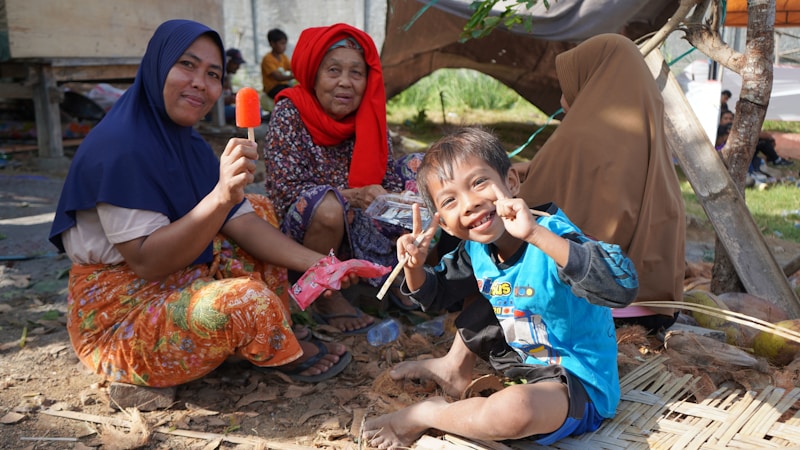Cultural Heritage in Weddings: Celebrating Traditions Across Generations
Weddings are not just a union between two individuals; they are a celebration of cultural heritage and traditions that have been passed down through generations. Each wedding reflects unique customs, rituals, and symbols that signify the couple's background, beliefs, and ancestry. This article will explore the significance of cultural heritage in weddings, various global traditions, and how these practices shape contemporary celebrations.
The Importance of Cultural Heritage in Weddings
Understanding the role of cultural heritage in weddings is essential for couples today. It provides context and depth to the celebration, making it more meaningful. Incorporating cultural traditions sees a couple honor their past while building a foundation for their future. These practices often strengthen family ties and community bonds, ensuring that memories and lessons from previous generations endure.
Global Wedding Traditions
Across different continents, weddings manifest unique customs reflective of cultural heritage. Here are some iconic wedding traditions from around the world:
| Country | Tradition | Significance |
| India | Henna Ceremony | Symbolizes fertility and prosperity. |
| Mexico | La Hora Loca | A burst of joyful celebration, often with costumes and music. |
| Japan | Shinto Wedding Ceremony | Involves rituals to purify the couple and invite blessings from Kami (spirits). |
| Greece | Stefana Crowning | Represents the couple's union and shared life. |
Highlighted Traditions
India: One of the most colorful and vibrant celebrations globally, Indian weddings often last several days. The Henna Ceremony involves intricate designs on the bride’s hands and feet, symbolizing fertility and good fortune. This lively event includes music, dance, and the gathering of family and friends, setting a joyous tone for the wedding.
Mexico: The tradition of La Hora Loca, or "The Crazy Hour," features a spontaneous party filled with costumes, masks, and upbeat music that encourages all guests to let loose and celebrate life. It showcases the Mexican spirit of community and joy embedded in wedding festivities.
Japan: The Shinto Wedding Ceremony features rituals such as the San-san-kudo, a sake-sharing ceremony that symbolizes the couple's commitment to each other and their families. The couple wears traditional attire, with the bride donning a white kimono, signifying purity and the beginning of new life.
Greece: The Stefana Crowning involves a ceremony where the couple is crowned with stefana (wreaths), representing their new role as king and queen of their household and unity in marriage. The process includes blessings and the sharing of wine, emphasizing the couple's commitment to one another.
Incorporating Cultural Heritage in Modern weddings
Many couples today seek to incorporate their cultural heritage into Modern weddings, creating a fusion of traditional and contemporary elements. This blending allows for personalized celebrations while paying homage to family ancestry and customs.
To effectively incorporate cultural heritage in weddings, couples can:
- Consult with family members to learn about traditions that can be included.
- Choose specific rituals or symbols that resonate personally.
- Opt for traditional attire to honor their cultural roots while adapting it to modern styles.
Choosing Venues and Decor
Tradition can also be reflected in the choice of venue and decor. Couples may choose historic sites, cultural centers, or places meaningful to their heritage. For instance, a couple with Chinese roots might choose a venue that allows for a traditional tea ceremony.
Furthermore, decor can include cultural symbols, colors, and floral arrangements that represent heritage. This approach not only beautifies the space but also tells a story of where the couple comes from, making every detail meaningful.
Popular Questions About Cultural Heritage in Weddings
As couples explore this topic further, they often have questions. Here are some popular inquiries:
- What are some common wedding traditions worldwide? Different cultures have unique practices ranging from handfasting in Celtic traditions to the jumping of the broom in African American ceremonies.
- How can I incorporate social media in traditional weddings? Couples can create dedicated hashtags for their wedding day to share experiences while keeping traditions intact, such as documenting the cultural aspects of their ceremony.
- Are there ways to pay homage to my partner's culture? Absolutely! Attending rituals together, blending elements from both cultures during the wedding planning, and learning from one another are excellent ways to honor each other’s heritage.
Conclusion: Embracing Cultural Heritage in Weddings
Cultural heritage in weddings represents a rich tapestry of history, love, and community. As couples embark on their journey together, embracing their traditions not only reinforces their bond but also celebrates the diversity that comes with love. By honoring history and customs, they create an unforgettable experience that strengthens family ties and brings communities together. It’s essential for couples to communicate openly about their heritage and find a balance that respects both sides, fostering a marriage filled with appreciation and understanding for each other’s backgrounds. Whether through rituals, attire, or decor, every element serves as a reminder of the beautiful story they are weaving together.
